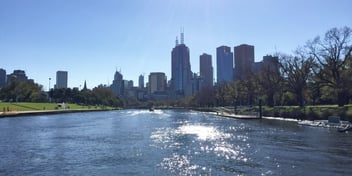The Australian water quality specialist improving supply overseas
Yarra Valley Water (YVW)’s Asoka Jayaratne is on a mission to help utilities across south east Asia deliver safe drinking water to their customers.
The water quality specialist has been at YVW since emigrating to Australia from Sri Lanka 25 years ago, and began volunteering during trips home.
This progressed into an official role as a part-time consultant with the World Health Organisation (WHO) in 2008, training water professionals to develop, implement and audit Water Safety Plans (WSPs) – referred to in Australia as Drinking Water Risk Management Plans.
“Since 2000, every time I’ve gone back to Sri Lanka, I’ve visited the water authority to encourage them to start thinking about proactive risk management for safe drinking water,” Jayaratne said.
“I’m a product of free education, so I always wanted to give something back. I started doing a small amount of voluntary work and now the Sri Lankan water authority is implementing more than 100 WSPs across the country with support from the WHO and UNICEF.”
Jayaratne’s work with the WHO has taken him to the Philippines, Malaysia, Indonesia, the Maldives, India and Thailand. He recently returned from a month-long trip to Bangkok, where he worked with a team from theMetropolitan Water Authority (MWA) to improve the implementation of its WSP.
The MWA supplies drinking water to more than eight million people in the Bangkok metropolitan area. It sources water from the Chao Phraya River, which is treated at four large water treatment plants.
Jayaratne said overseas utilities often have a different approach to their Australian counterparts when it comes to producing high quality water.
“In Australia, water suppliers are responsible for making sure water is safe 100% of the time. That’s a very hard target to achieve in pretty much every country I’ve visited,” he said.
“This is because a focus of most big, urban utilities overseas is to get water to their customers. A lack of regulation, along with socio-economic and sometimes political factors, pushes water safety further down as a priority.”
To help the MWA deliver safe water, Jayaratne re-assessed one of the utility’s water supply systems from catchment to consumer, working through every possible risk relevant to drinking water quality.
He identified 110 improvements, ranging from relatively simple fixes such as changing a procedure to bigger improvements that require a shift in the culture or significant changes to water treatment processes.
Jayaratne said the MWA is keen to conduct a full WSP audit in 12 months, but the aim of his work is to make his visits redundant.
“The objective of WHO assistance is capacity building within target countries; I always tell [the utilities] I prefer not to come back. I want them to stand on their own two feet and not rely on consultants in the long term” he said.
“This approach has proved successful so far in Malaysia and the Philippines”.
Jayaratne said he will continue to share his knowledge with overseas utilities, and encouraged more Australian water professionals to do the same.
“Most countries are beginning to accept the message that safe water should be the number one priority, but they need help. We can help by providing operator training for utilities to move towards best practice water treatment targets,” he said.
“You get greatest satisfaction when you return to a country and see evidence of water supply system improvements to produce safe water.”
In addition to his overseas assignments with the WHO, Jayaratne recently voluntarily authored a joint WHO/International Water Association (IWA) publication, Strengthening Operations and Maintenance through Water Safety Planning. The paper, which launched at the IWA World Water Congress in Tokyo last month, sets out case studies from across the world that show the link between operation maintenance and drinking water quality.

